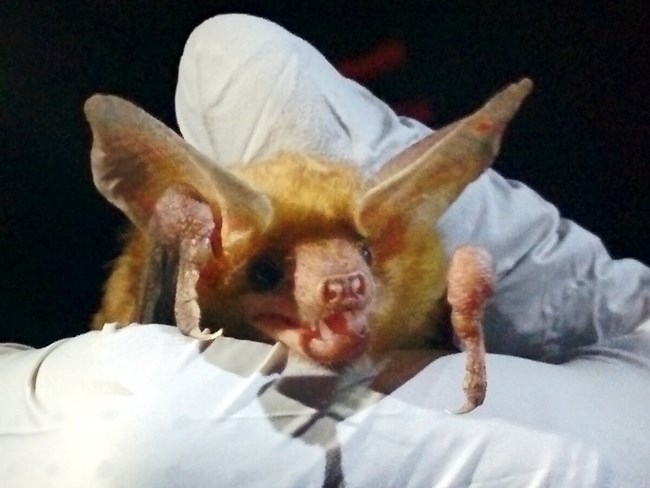Last updated: November 22, 2019
Article
Team Embarks on Third Year of Bat Monitoring in Marin County

Katie Smith / Golden Gate National Parks Conservancy
October 2019 - The current biggest threat to Bay Area bats are habitat loss and disturbances to the places where they roost. So researchers in Marin County are hoping to check which bat species are present, and learn more about their roosting habits and how they use local habitats. This information could also help us understand how susceptible local bats are to White-nose Syndrome, and how to protect them in the event that the fungal disease spreads to the Bay Area.
In 2019, researchers embarked on their third year of bat monitoring in Marin, building off of data from the past two years. The research team set up acoustic monitoring devices at 37 sites across the county. Acoustic data detected 12 of the 13 species known to be present in Marin. The undetected species, Townsend’s Big Eared bats, are notoriously difficult to detect via acoustic monitoring because their calls are very quiet. Previous years of mist-netting have confirmed that Townsend’s big-eared bats are present in Marin, and there is a large colony of them at Point Reyes.
Researchers are also using radio telemetry to monitor bats in Marin. They capture bats in mist nets, tag them with radio tracking devices, and then come back the next day to trace the radio signal back to the tagged bat’s roost. This year, researchers tagged 12 bats over the course of five nights of mist-netting. The captured bat species were big brown bat, pallid bat, California myotis, yuma myotis, and fringed myotis. The research team was particularly excited to capture the fringed myotis, as they had not captured the species since their present monitoring effort began in 2017. Of the 12 bats tagged, seven were females. From these tagged females, researchers were able to trace radio signals back to two different maternity colonies: one of big brown bats, and one of pallid bats. Researchers conducted an overall health assessment for all bats that they caught, and did not see any signs of white nose syndrome.
Check out this article on nps.gov to learn more about bat conservation in the San Francisco Bay Area, or contact Katie Smith with any questions.
